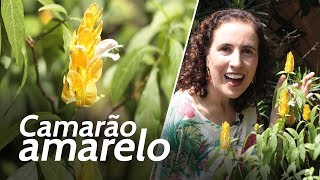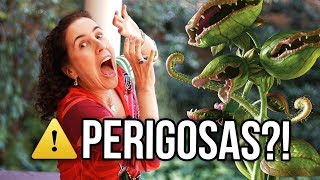Monday, 12 January, 2026г.
















Где искать: по сайтам Запорожской области, статьи, видео ролики
пример: покупка автомобиля в Запорожье
Como Cultivar Antúrios | Nô Figueiredo
Site: http://nofigueiredo.com.br/
Instagram: http://instagram.com/nofigueiredo1
Beijos floridos de gratidão,
Nô Figueiredo - A Menina do Dedo Verde
paisagista, florista, artista, blogueira e especialista em desenho ambiental
Semeando amor à natureza
Anthurium andreanum - Olá! Agora eu vou falar sobre o Antúrio. Essa planta é semi-herbácea, ereta e perene. Ela é originária da Colômbia, e vai de 30cm até 1m de altura. Mesmo quando ela não está florida, a sua folhagem é muito ornamental. Suas flores são formadas na primavera e no verão. São ornadas com espatas sulcadas. Que é o que a gente chama de flor. Mas na verdade, o que a gente chama de flor, é a bráctea. Que ela é bem vistosa e brilhante, pra atrair os polinizadores. A flor é esse pitoquinho aqui... A espata pode ser cor-de-rosa, vermelha, salmon, vermelho sanguíneo, meio verde. É uma planta bem fácil de manter. Ela gosta dessa situação de meia sombra. Não gosta de sol direto. É uma planta que floresce dentro de casa. Ela pode ser cultivada em vasos, em conjuntos isolados ou jardineiras. Sempre a meia-sombra com terra vegetal. As suas inflorescências também são muito utilizadas como flor de corte. Elas formam arranjos bonitos e duráveis. Ela não gosta, é de frio. Todas as partes da planta são tóxicas. Se por um acaso as folhas estiverem secas e quebradiças. Quer dizer que você esta dando pouca água pra ela. Ela adora receber água nas folhas. Você pode regar as folhas e regar o substrato. Se aparecerem manchas marrons nas folhas, é sinal de que elas foram atacadas por fungos. Corte as folhas que estiverem mais atacadas e aplique um fungicida. Se por um acaso aparecerem pontos brancos na folha. É sinal de que a sua planta foi atacada por cochonilhas. Então você pode pegar um cotonete, molhar ele no álcool. E aí passar e remover as cochonilhas da sua planta. Se as folhas estiverem meio amareladas. É sinal de que sua planta esta num lugar muito frio, ou muito úmido. Então mude o vaso pra um lugar mais quente e arejado. Se as novas folhas que estão nascendo forem muito pequenas. Desproporcional, né? O tamanho das outras folhas. É sinal de que faltam nutrientes pra sua planta. E depois que a inflorescência secou, você pode então podar, né? Você vem aqui na base, e tira a inflorescência. Se você gostou desse vídeo, dá um "curtir" aqui embaixo. Adicione ele aos seus favoritos, e se inscreve aqui no meu canal. Ajude a semear o amor a natureza. Compartilhe meus vídeos e posts nas suas redes sociais. Beijos floridos da Nô!
Hi! Now I will talk about Anthurium. And teach, give the basic cultivation tips. This plant is semi-herbaceous, erect and perennial. It is originally from Colombia, and it goes from 30cm up to 1m tall. Even when it is not flowered, its foliage is very ornamental. Its flowers are formed in the spring and summer. They are adorned with ridged spathes. Which is what we call flower. But in fact, this part here, that we call flower, is the bract. It is like that, very showy and bright, to attract pollinators. The flower, in fact, is stick here... This spathe could be pink, red, salmon, blood red, and so on... There's even a medium green. It is an easy plant to maintain. It likes this shade situation. Does not like direct sun. It is a plant that bloom indoors. It can be grown in pots, in groups in the garden or in planters. Always in half shadow with vegetal soil. Its inflorescences are also widely used as cut flower. They form beautiful and durable arrangings. What this plant does not like, is cold. It's a very tropical plant. Now, you need to pay attention and be careful! Because all parts of the plant are toxic. If by any chance the leaves are dry and brittle. It means that you are not giving enough water to it. It loves getting water on the leaves. You can water the leaves and water the substrate. If you see brown spots on the leaves,is a sign that they were attacked by fungi. Cut the leaves that are most attacked and apply a fungicide.If by chance appears white dots on the leaves.It is a sign that your plant was attacked by scale insects. So you can take a cotton swab, wet it in alcohol. And then pass over the leaves to remove the scales from your plant. If the leaves are kind of yellowish. It is a sign that your plant is in a very cold place, or very humid. So move the pot to a warmer and airy place. If new leaves are being born very small. The size of the other leaves. It is a sign that nutrients are missing to your plan. And after the inflorescence dried, you can then prune, right? You come here at the base, and cut off the inflorescence. Add it to your favorites, and subscribe here on my channel. Help sow love nature. Share my videos and posts on your social networks. Flowered kisses by Nô!
Теги:
a menina do dedo verde ameninadodedoverde nofigueiredo nô figueiredo paisagista nofigueiredo paisagista nô figueiredo antúrio flamingo flower Anthurium andreanum Anthurium (Organism Classification) Gardening (Interest) jardinagem
Похожие видео
Мой аккаунт


 У вашего броузера проблема в совместимости с HTML5
У вашего броузера проблема в совместимости с HTML5


